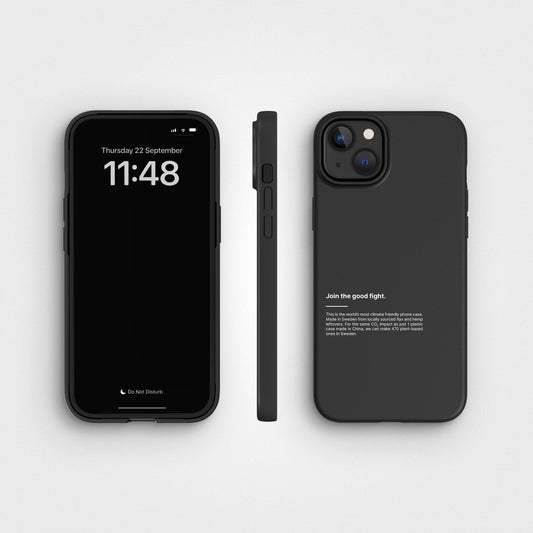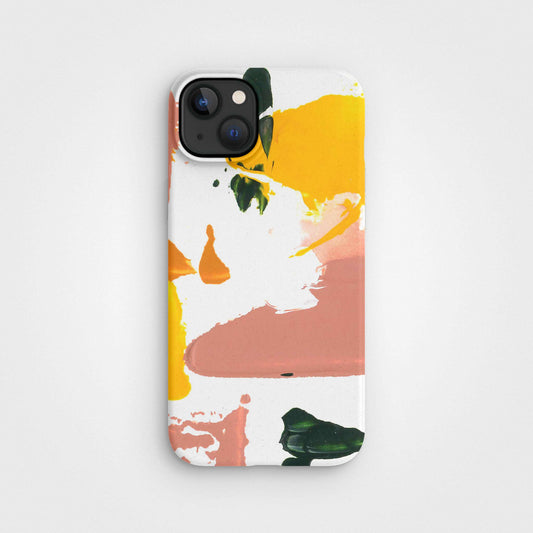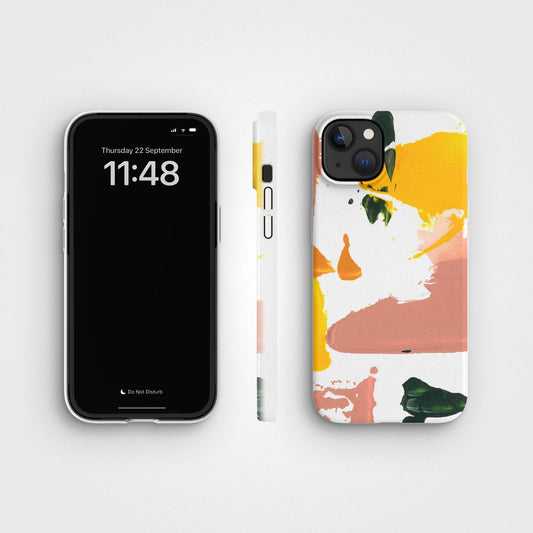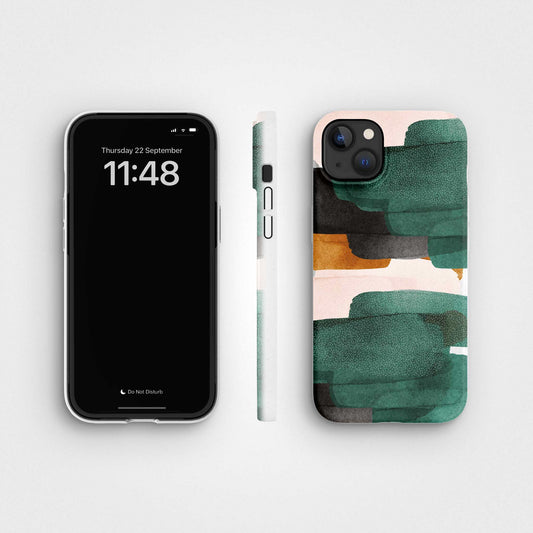#agoodcommunity sat down with Helena Helmersson, now CEO of H&M Group. We got some unique insights into the changes that need to happen in fashion and retail, from both a company and consumer perspective, and how she's spearheading the H&M Group's move to a more sustainable, circular model.
Anders Ankarlid, CEO and co-founder of A Good Company, interviews Helena at the H&M Headquarters in Stockholm. You can read the transcript of the interview below!
Anders: Hello everyone and welcome to #agoodcommunity. Today we're speaking with Helena Helmersson who has had a fascinating career, all in one company, but in various positions. When I did my research I found that she has lived in Bangladesh, Hong Kong, and in 2015 relocated to Stockholm, Sweden. Welcome to #agoodcommunity!
Helena: Thank you.
Anders: I have so many questions for you, but I wanted to start off a little bit easy. How did you got yourself into retail at first?
Helena: Actually first, after university, I went into banking. And I can't think of any industry where I was so misplaced. So I would say that I didn't do a great career of four months within banking. And then I heard about H&M looking for controllers. And I was very passionate about fashion, so that kind of attracted me. So that was why it all started. I gave my CV to the reception in the head office and from there...
Anders: It's cool. You were actually at the head office?
Helena: Yes.
Anders: I calculated the number of roles you had; it was like 14 or 15 different roles.
Helena: You might be right.
Anders: I might be.
Helena: Yes, I have not counted.
Anders: So your current role now is a COO?
Helena: Yes.
Anders: How do you spend most of your days?
Helena: Well most of my days... I started a bit more than one year ago in this position and it's a new position for the company. So during this year I have actually been traveling a bit less and spent more time here with my organization, also to work on more transformative agendas. So it's been a lot of internal meetings, a little bit less traveling than what I'm used to.
Anders: Yeah. And when we pre-chatted a little bit, you told me that loads of people tend to simplify very complicated questions.
Helena: Yes.
Anders: Which is then as a counter-perspective to maybe the TED Talks where you talk about one topic for 15 minutes and after that you feel that we have solved this.
I want to dig in so we have loads of time to discuss this very question. What do you see as society's greatest challenge now in terms of maybe the climate? And what do you, with all of your experience living in all of these countries, see as a way to solve it? And you can elaborate for 15 minutes if you like..!
Helena: Oh good, because it's a big question! Well, I would say, yes, probably like many others, that the biggest challenge we have is that taking all of these natural resources, and kind of breaking the planetary boundaries as we do today, simply won't work in the future. And just looking at the facts, it's really, really scary and we have to scale up all the ambitions and plans that we have. And of course, working for such a big company, we also know that with our size we kind of have to be part of leading that change.
And also we take a lot of natural resources into our production processes, like water and land-use chemicals to some extent, so we really have to shift our business model. And that's the journey that we are on.
When talking about solutions, of course you can do things that are less bad. You can shift the materials in the products to materials that are without chemicals or with less chemicals or less water. But I think solving the problem is more to going towards more circular business models. And it's almost like circularity is a buzzword word nowadays. Everybody's talking about it. But to me it's just so important. That's where we have to go.
Anders: And how can you address that? I mean we, as a small company, are facing large challenges just coming up with advices, due to the fact that we are selling to 50 countries. And maybe you're selling to 220 countries. How can you come up with a circular idea when you are that global?
Helena: Well, or you can turn it around and say that we really have a chance to change, for example, consumers' behavior. And we also have a chance to even advocate for political changes, with our size, if we come together with others. So I think it's tricky for us because we're such a large company with our challenges, but we also have great opportunities to make a change.
So I would say that for a company like the H&M Group, the most important part while turning our business model into a more circular one is to engage with our consumers, for example, that they return their clothes to us or to others for them to be reused or recycled. And of course the whole ambition for us is to use those clothes, make them into new fibers, and use them over and over again. Because then that would move us into a more circular system where we can still help our customers to dress according to their personality and enjoy what we can give them, but at the same time not take the kind of land-use and water that we take today in our production processes.
Anders: I'm addressing this question to you now, since it's one we are struggling a lot with and because you have also been Head of Production before. When you're recycling fashion items, what I have learned so far is that the fibers, it's totally possible, but the fibers typically get thinner and thinner or smaller and smaller. Is there a way, is there a silver bullet around it or is it always the case that you have to blend in new materials into the recycled ones as well?
Helena: Yes. In many cases the fibers are blended. And now what we do is to help startups or those innovators that come up with new techniques and, with our size, we also invest in them and try to help them, and they help us to scale up their innovations and techniques in how to separate the fibers again, so that it can be reused.
So there are a number of those initiatives where of course the challenge is going from testing to scale. Because in the scaling phase, things are happening where of course we have to, for example, make sure that those fibers are sustainable and have the right quality, which is usually one of the biggest challenges.
Anders: If the circular thing within fashion is happening, will that affect loads of people that are working in the fashion industry today? I'm just thinking that the specific farmer in Bangladesh where you used to live, maybe will be out a job.
Helena: Right.
Anders: Is that something how you think about?
Helena: Yes. All those things are areas where we have to think how to go about it. It's the same with data tech, AI, which in the long run could have a consequence of course on people in poor countries where these fashion industries have always been a stepping-stone out of severe poverty. Helena: So of course we need to make sure that who can we collaborate with to make sure that new industries are also evolving in those countries, to secure of course that they will have a job. But the jobs will change. That's for sure.
Anders: So they will have other opportunities?
Helena: Yes. Definitely.
Anders: Maybe not being in the field picking up cotton since, if you can have maybe 30% that goes in the circular economy, you have 30% less demand for buying cotton, I guess.
Helena: Yes. And we also have to think that land where we have cotton being produced today will also be used for food more in the future, because of course the developing countries becoming richer. So we have to look at all of these systems. And that's why I also think that it's easier to silofy a question when it comes to, for example, the environment. You can talk about, for example, water or planetary boundaries in silos, and make it easy for the audience to come along with you and to agree. While in my world, and at least what I'm trying to contribute with, is a whole system that is more sustainable.
So how can we change our business models, turn consumption into sustainable consumption to make sure that we can still provide economies where jobs will be created but not challenge the planetary boundaries as we do today? Because to me sustainability is really about people, planet and profit and I'm excited about finding ways and new revenue streams that companies such as H&M Group can work on and develop.
Anders: A very complex view, if you like.
Helena: Yes. I know.
Anders: Do you feel that if you step aside from your role a little bit and would like to give maybe advice to, if you named three other mature companies, we can take anyone, we can take maybe Facebook and we can take just two others in different industries, what can other mature, large companies do to contribute? You have your supply chain sort of figured out. It's still fairly complex, and I understand your system view of addressing it. But if you're coming from another industry and still care about the climate change, what would you say as executive leaders, what will be their best contribution?
Helena: First of all, I don't think we have everything figured out. I think that a supply chain like ours, we say that it's always in draft, our strategies will kind of always evolve. But I think that we, together with most of the other big companies out there, have a super-important task that we will have to solve in a better way in the future; and that's also engaging consumers. How can we make it easy for consumers to make more sustainable choices? Because today I don't think we make it really easy. It's a lot up to consumers. For example, in our industry, of course they won't read the sustainability report. I mean it would be lovely if they do because ours is great, but-
Anders: Maybe the vast majority won't spend that time though.
Helena: But I think we have to make it much easier than that. And that goes for our industry, but also all other big companies out there that have millions of customers, where they have a relationship. And what can you do with that kind of relationship to actually help them make these kinds of choices?
Anders: So if I'm comparing us as a small company, where we have no legacy to take into consideration, we have no formal processes to change and so on. Do you feel that sometimes you, representing a large company, have from the beginning when you're trying to making a change, a sceptical view from your customers, due to lots of articles covering you? Most of them are shiny, some of them are maybe not shiny. Is that a complex thing where you're obviously trying to, with everything you've got at least, trying to make a real difference?
Helena: Yes. And I would say especially when I worked as Head of Sustainability, I thought that was so challenging. It was almost like I took it personally because my job meant so much to me. And seeing those headings and trying to work with an agenda where it's really difficult for a company like ours to sometimes get through, that was challenging. But taking a step away also made me realize that we will have to just continue our work, and work together with stakeholders. And in the end I am sure we will get facts that we can spread in a good way.
But I think especially when it comes to how we are perceived, we have to think very holistically. So it will not kind of be enough to have a fantastic agenda for workers in Bangladesh, or phase out all hazardous chemicals. It will not be enough. We have to do much more.
And with perception also comes, when you enter a store, when you enter, for example, an H&M store, if it's very packed with garments a consumer will obviously get a perception of us. So we have to more look into who are we? And how will we make sure that this is also how we are perceived in our stores, online store with stakeholders, but with consumers as a whole? Does that make sense?
Anders: Yes. It does make sense. I had another question on that topic though. How do you stay... It seems that change always takes time and we as humans always try to simplify it, just make it as small as possible and make that happen though change will happen; typical behavior change.
Helena: Yes.
Anders: How do you, in such a complex question, which I guess takes a fairly long time to finally solve, if there is a final solution on the table, how do you keep your team and yourself accountable for it? Since it must be 10, 15 years back or maybe you have already retired when it's solved?
Helena: But this will always evolve. It's like we have our sustainability goals right now. We have scorecards now where conscious or sustainability is one of the core parts that we are evaluated on. It's just that these goals will shift. It used to be about certain topics yesterday. Today's topics are new. Tomorrow I'm sure it's going to be even more kind of impactful goals that we have on our agenda.
So we have quite a lot of measurable goals actually on each function, on each brand, on each country that they are driving themselves. So I think the key for us is to integrate sustainability. It's not to have a sustainability department on the side doing everything. So I can easily say what is my accountability when it comes to sustainability, and I can actually also look at progress on that.
Anders: And I guess then you are dividing yourself. We are doing a separate research where we're looking at the 500 biggest companies in the world, and how many of the goals they have right now that are actually connected to sustainability or just financial.
Helena: How interesting.
Anders: Yes, it will be done soon... I can share it with you. It will be done on Friday. It's not the shiny view.
Helena: No, I can understand.
Anders: I think maybe 2% of the goals in total are related to climate and environment.
Helena: Right.
Anders: Which I then guess, differs from your goals. And I have been reading through your strategy as well.
Helena: Yes.
Anders: If we're taking the approach though of me as a consumer, you as a consumer, what are the best things that we can do to do our part, if you like?
Helena: Well of course being informed and choosing companies or brands or... Where you want to give your support is good, but that is difficult. And here I feel we have a responsibility to make that easier, which is why we work with many other brands in the industry to work more on an index that would make it more easy for consumers to make those choices.
But other than that you can still today of course... Over-consumption is something that none of us, in my view at least, can stand behind, so reusing, recycling I would say is one of my top recommendations or suggestions. And to be able to have a longer life for the products that you buy. You can also try to... We have a new service where we can also fix garments for them to have a longer life. And we will shortly also start with renting, which is kind of a new business model for us and a new way to find new revenue streams that of course are more circular than the more traditional ones.
Anders: some really good examples of these... What's the name of that lady's, Rent the Runaway or something like that?
Helena: Right, yes.
Anders: It's been fairly successful.
Helena: Yes.
Anders: But if I'm in the space of though... I understand that you should keep your garments for longer time, you should try to repair it, and maybe you should do secondhand or recycle it in some way.
Helena: Yes.
Anders: But if I'm in the selection of buying a new thing, how shall I select where to buy? If I have the economical opportunity to buy from several stores, what are the things that I should look for?
Helena: Usually there are, even though our industry is not maybe as good as the food industry in saying what is organic or better for the environment, there are labels on some garments with quite many brands. With us we use, for example, for the H&M brand, the Conscious label, that would show... And always if we have organic materials of course, that's really, really good.
So I would say there are advice that you can listen to as a consumer. But again, what I think is most difficult is more understanding the different brands or companies; what are they doing as a whole and what ambitions do they have to make a change?
Anders: And that is fairly complex to understand if you're on high street.
Helena: It is. And from what I have seen in our companies, big companies have more resources to make a change, so they usually have of course much bigger sustainability programs, but their challenges are also often a bigger. And of course they are the ones that have to take a lead. But I would definitely say that you can see and at least get some advice from just looking at the labels and looking at materials as such.
Anders: I guess then due to the fact that you actually were Head of Production, if I'm as a consumer, and I have no clear agenda with this question, I don't have an actual opinion, this is more of an interesting topic. I have read though that organic cotton is actually causing more harm to the environment than traditional cotton. How do you see this since Conscious is one of your main divisions you are pushing for, one of the main areas, if you like?
Helena: Yeah. All this, we work a lot with organic cotton and also something that is called Better Cotton as a way to use less chemicals, less water and so forth. And they have both great upsides of course compared to conventional, but they also have challenges within them. For example, I would say the biggest challenge with organic cotton, because that's great if you look at the fact that you don't use fertilizers in the same way, but also the cultivation of that cotton is much more challenging. So the output will not be as conventional cotton or even Better Cotton. And there's more insecurity in the quality of that cotton and how much you can get out.
Anders: So the lasting time is shorter? No. Okay. So it's more of a production expense?
Helena: Yes, because you have to treat the soil in a specific way, so you often get a little bit less output, as a farmer.
Anders: So less effective?
Helena: Yes. While for example, Better Cotton is more holistic, where you look at water, you look at social conditions on the cotton fields, you look at chemicals and fertilizers. So it's a bit broader when it comes to the focus, but it's not zero chemicals, it's not zero fertilizer. So again, it's a great ways to step away from conventional cotton, but it's not the full solution. The full solution is more to find a circular way of working of course.
Anders: Or maybe a blend of recycled and organic cotton and something else maybe, a new type of progressive materials, I guess?
Helena: Yeah. I think we should really, really focus on how can we scale up more of the recycled materials within our supply chains and how can we be part of that system.
Anders: Yeah. I have two more questions for you. One is that if you have a look at Helena in 15 years, what would be the one thing that you would be really proud if you have achieved?
Helena: I guess especially as you get older, I've done a lot of thinking on my own, why do I do what I do? And what is it that I want to contribute with? And my mission is really to be part of transforming this industry, because this industry has a lot of challenges. And I think we are definitely one of the leaders that can make that change. So of course I feel very fortunate to work for the H&M Group that can kind of give me and my colleagues that strength and that power to make that change.
So in 15 years, I would love to have been part of finding new techniques to use fibers over and over again, to collaborate with the right partners that can show that this can be scalable, that consumers can come to our stores, and that we can also, with the value for money that we can give, that they, regardless of wallet, the size of wallet, that they can dress according to their personality. And also that we have created a network within our company to try out different business models, and show that circularity is actually the way going forward. That we kind of have decoupled how we take natural resources and our growth.
Does that make sense?
Anders: Yeah, it does make sense.
Helena: I would love to be part of that change.
Anders: And the final question, which I have completely stole from one of my favorite podcasts. Who do you think that we should interview next for #agoodcommunity?
Helena: I am always very interested in listening to consumers that are future-looking, consumers that would also give us the advice that we need. Of course we have focus groups and so forth, but having more deep conversations with consumers, I think, is fantastic.
Then, of course, there's a lot of people that I really admire, Gunhild Stordalen is one of them because she is trying to change the system. Not only a silofied question, but the system around food. And I admire that because that is not as easy, but she is kind of relentless in her ambition to make a change in that industry.
Anders: I will shortlist her.
Helena: Yes. Do that.
Anders: Helena, thank you very much for taking the time. I know that you're a busy woman, and we are really grateful that you took this time to speak with us. Thank you very much.
~
Do you have an opinion on this, perhaps you work for a company working to make fashion more sustainable? We'd love to hear from you. Send us an email at fb@agood.com.





























